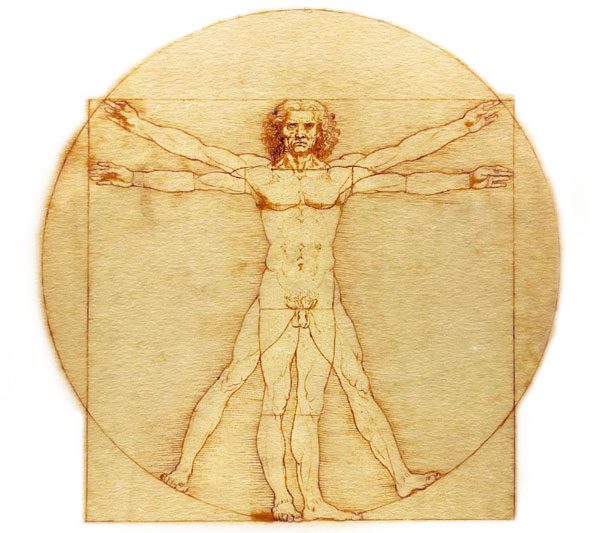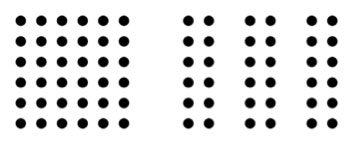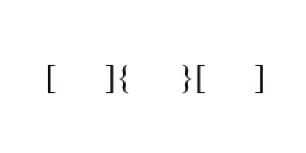“The whole is always greater than the sum of its parts…” Gestalt Psychologists
How do we see and perceive the world around us? The retina in each of our eyes is flat-shaped. But, still then how do we see a three-dimensional world out of a two-dimensional retina! Have you given a thought to this? The environment around us is filled with colors, dimensions, angles, shapes, sounds, forms, textures, gradients, depth, proximity and nearness, blocks, designs, tactile sensations, and a multitude of other sensory stimulations. Despite of all these characteristic features of the environment our brain does not get confused and gives us a well-balanced perception of the world. Interesting isn’t it?
In the generic sense of the term, Perception refers to the process of receiving sensory information through our sense organs (eyes, ears, tongue, nose and skin) and making sense out of it. Without perceptual abilities perhaps you would have been just like a robot or sensing-machine. In other words, perception gives a definite form and meaning to anything and everything in and around you. Without it, you would have only sensed different entities as blocks, independent sounds, smells, colors, patches, etc. Even while reading this blog you would have seen only lines, dots, curves and angles…but not words, phrases and meaningful sentences.
For many years scientists, psychologists and philosophers wondered about how the human brain tends to organize things so wonderfully with finesse’. Then, Gestalt Psychologists came up with amazing facts and explanations. They said that, the human brain has the ability to perceive different aspects as a “whole” entity. Even though we gather sensory information in “bits n pieces”, yet we have the stunning ability to combine them and perceive as a wholesome entity. Here are some of the laws of perceptual organization that we all do in our everyday lives:
Law of Proximity or Nearness
We tend to perceive things closer to each other as a group. For example: in the figure, we don’t perceive the circles as separate dots, rather we see them as groups of dots forming a square and lines placed together.
Law of Similarity
In this law, similar items form a group or organized whole. So in the figure, you must be seeing circles and triangles as separate entities, e.g.: group of triangles and group of circles.
Law of Good Figure or Symmetry
In this law you tend to perceive different objects as being symmetrical and forming around a center point. It is generally pleasing to perceive objects in equally divided parts. For example: We perceive the figure as 3 groups of brackets, rather than 6 brackets separately.
Law of Closure
Do you see the figure as jagged and non-continuation lines or a circle and square? You see a circle and a square, right? This is due to the law of closure. Our mind has the capacity to perceive incomplete objects as a complete form despite being presented with incomplete stimuli.
Law of Continuity
According to this, we perceive objects as continuing throughout rather than being fragmented when the cross something or are inter-positioned with something. You can see the figure for understanding this law more clearly.
Now, the question arises that how do we perceive depths and movements? Try doing the two small exercises below; you will yourself get the answer:
Take a dime or hold a pen in a vertical position with its nib pointing upwards. Close one eye and look at the dime or the pen’s nib by pressing the eyeball of your closed eye again and again? What did you experience? You saw the dime or the nib dangling, right? Now keep the dime on a table or flat surface and move your head from side to side while looking at it. What happened? The dime or the nib seemed static, right?
Now try another exercise, while looking at something it becomes our focal point or fixation point. If you move your head from side to side, you will see that the objects close to your fixation point will move in the opposite direction of your head, while objects farther from the fixation point will move in the same direction of your head. This is also called motion parallax in movement illusion. You must have seen the same phenomena while traveling in a bus or train. Trees, plants closer to you would be going in the opposite direction, while the sky and distant mountain would be going in the same direction as yours.
We perceive depth, color and movements due to the cues or clues we get from different sensory stimulations and also due to the background/ background information.
So, these were some of the interesting facts about how we perceive the world around us. If you put them into practice in your thought world you will see that you tend to get attracted towards like-minded people, even if you heard a part of the conversation you can make out its sense or the topic in which someone is conversing, chaos and litter tend to disturb you and you would like things and people in proper order and symmetry.
Your mind has invincible powers and strengths. The more you learn and know about it, the more you can use it for worthwhile purposes because:
“Every sunrise is priceless and you can experience the richness that life holds only when you live life to the full instead of just being an onlooker.” Stephen Richards, Think Your Way to Success: Let Your Dreams Run Free
Best wishes,
Sareeta









Leave A Comment